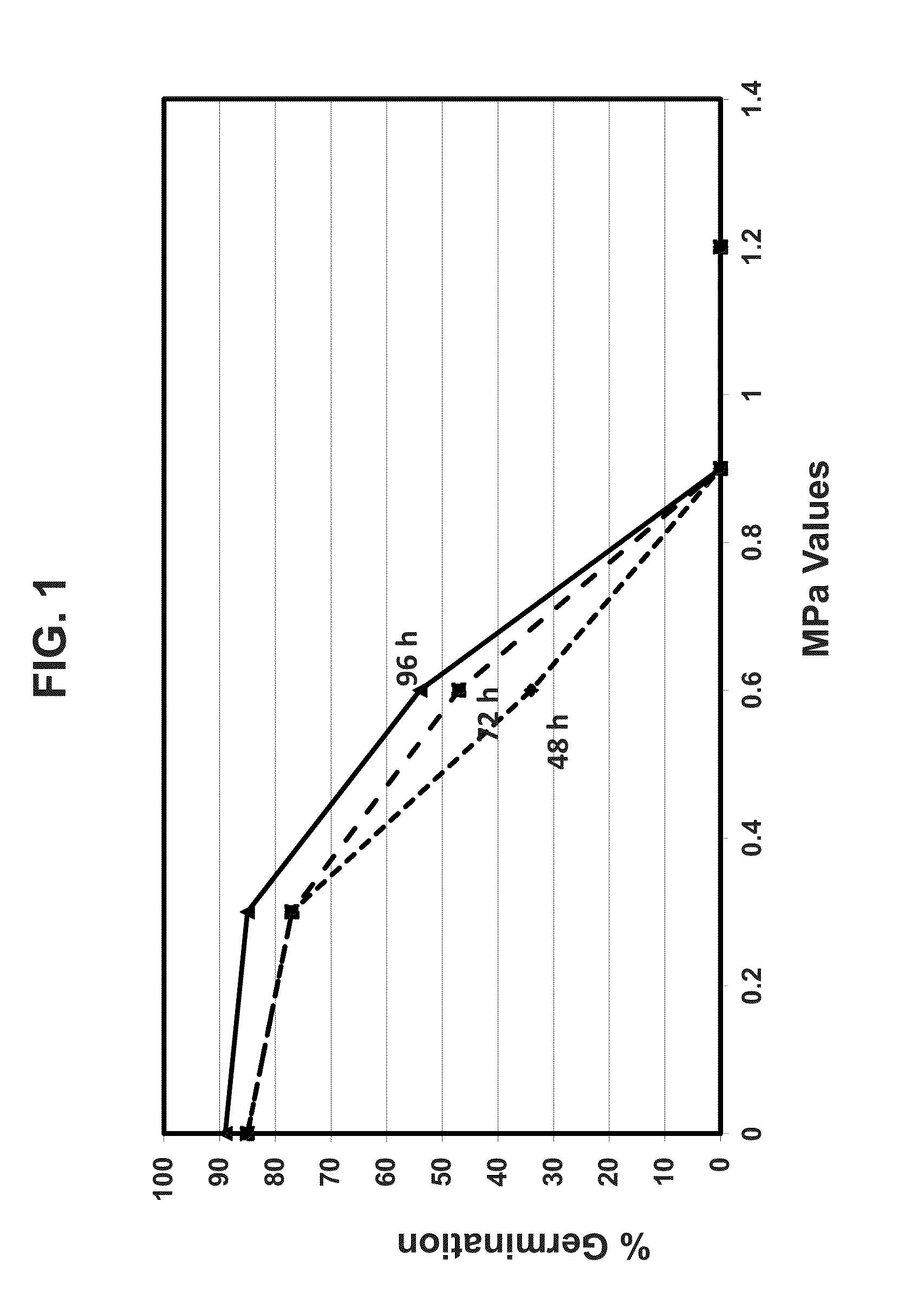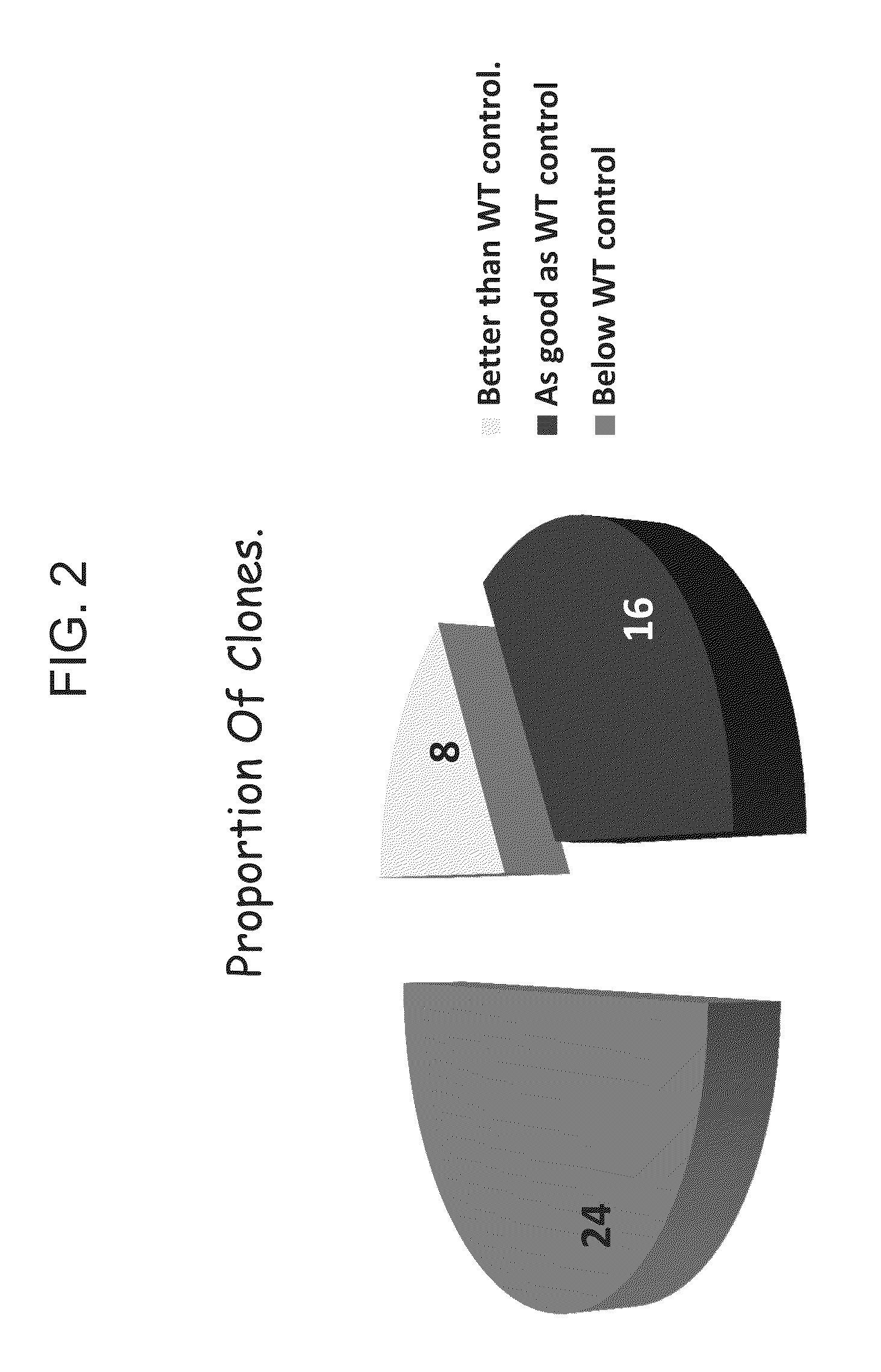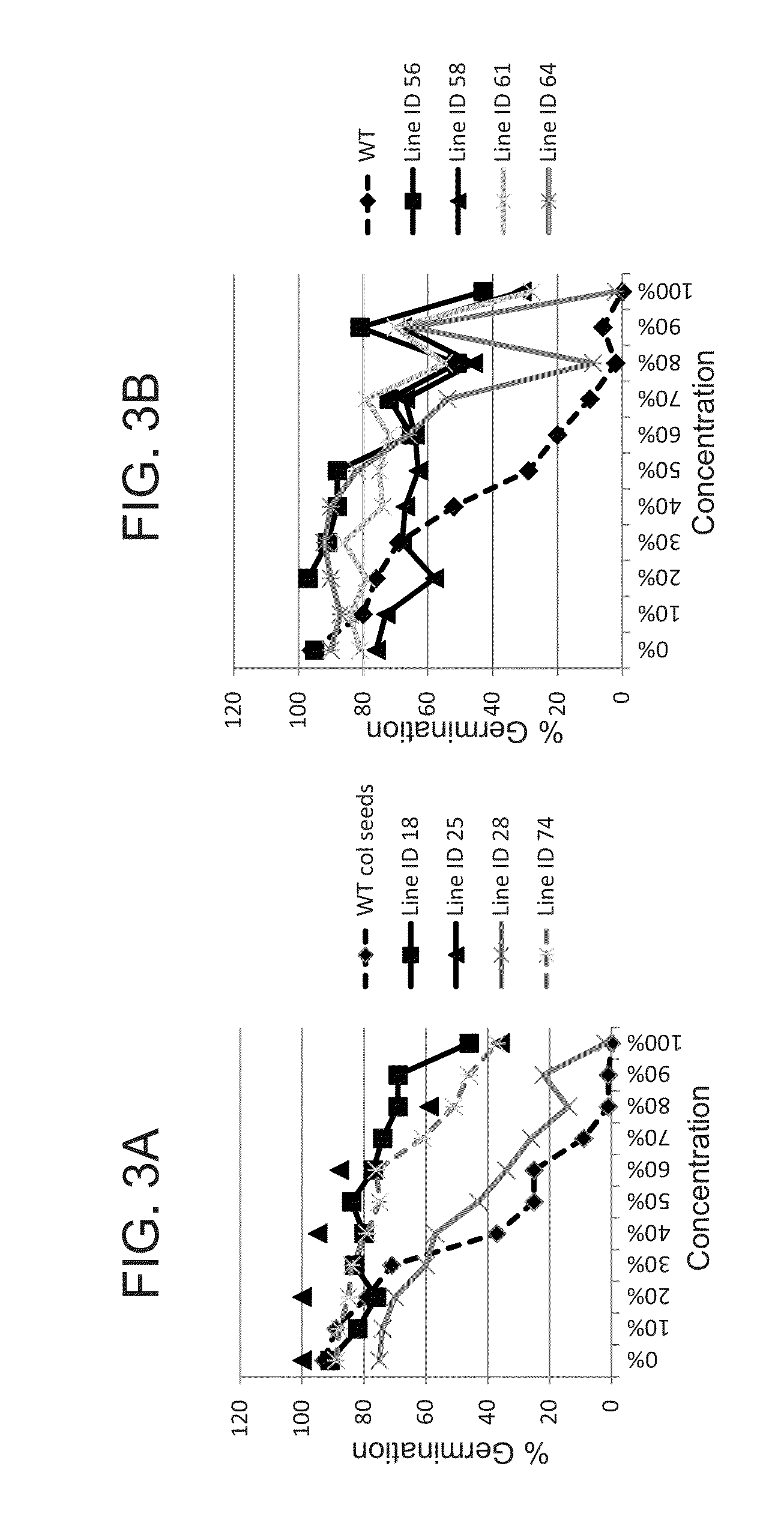Methods for the identification of genes involved in abiotic stress tolerance in plants
- Summary
- Abstract
- Description
- Claims
- Application Information
AI Technical Summary
Benefits of technology
Problems solved by technology
Method used
Image
Examples
embodiments
[0173]One embodiment of this invention is a method of selecting seeds from at least one transgenic plant line with increased osmotic stress tolerance, wherein the method comprising the steps of: (a) obtaining seeds from at least one transgenic plant line comprising at least one heterologous polynucleotide sequence; (b) subjecting the seeds to osmotic stress by placing them on media comprising at least two osmolytes; and (c) selecting seeds that show an increased percentage seedling emergence when compared to seeds from a control plant, wherein the control plant does not comprise the at least one heterologous polynucleotide sequence, and wherein the seeds from the control plant are subjected to the same osmotic stress as the seeds from the at least one transgenic plant to be tested.
[0174]In one embodiment, the method described in the current invention is used for screening for osmotically tolerant plants in a high-throughput fashion. In one embodiment, the method described in the cur...
example 1
Osmotic Stress Assay
[0199]To establish a systematic screen to identify novel osmotic stress-tolerant mutants, a screen was standardized for osmotic stress tolerance using a combination of osmoticum. A combination of osmolytes in the media, such as water soluble inorganic salts, sugar alcohols and high molecular weight non-penetrating osmolytes was used to select for osmotically-tolerant plant lines. Screening of transgenic plant lines was done on media with combination of osmolytes to allow the identification of genes involved in general osmotic stress tolerance. Osmolytes include, but are not limited to, the following: sodium chloride (NaCl), sorbitol, mannitol and polyethylene glycol (PEG).
[0200]To develop a screen for osmotic stress assay, seeds from 48 Arabidopsis transgenic lines were procured to test for their response to osmotic stress.
[0201]The osmotic stress agents used in this assay were the following: NaCl (sodium chloride); sorbitol; mannitol; and polyethylene lycol (PEG...
example 2a
Triple Stress Assay
[0217]A systematic screen to identify mutants tolerant to a novel combination of three abiotic stresses is presented. Specifically, plants are grown in conditions of simultaneous drought stress, heat stress and high light stress. Mutants with positive growth and / or positive decay parameters can then be identified.
Materials:
[0218]Arabidopsis mutant and / or control lines.
Methods:
Phase 1 Screen:
[0219]Seeds are soaked in water and incubated at 4° C. for 3 days in the dark. Cold shocked seeds are planted in controlled density and spacing on soil. Specifically, 9 plants in a 3×3 grid are grown per 5.5 inch square pot with 8 pots per flat. For phase 1 screens, each pot represents a different test line.
[0220]For 14 days, plants are grown under non-stressed conditions involving: (a) Soil: Metromix 360; (b) Fertilizer: Osmocote and Peter's; (c) Light Regime: 16 hours light / 8 hours dark; (d) Light Intensity: 150 μE; (e) Temperature Regime: 22° C. day / 20° C. night; and (f) Hum...
PUM
| Property | Measurement | Unit |
|---|---|---|
| Osmotic pressure | aaaaa | aaaaa |
| Molecular weight | aaaaa | aaaaa |
| Stress optical coefficient | aaaaa | aaaaa |
Abstract
Description
Claims
Application Information
 Login to View More
Login to View More - Generate Ideas
- Intellectual Property
- Life Sciences
- Materials
- Tech Scout
- Unparalleled Data Quality
- Higher Quality Content
- 60% Fewer Hallucinations
Browse by: Latest US Patents, China's latest patents, Technical Efficacy Thesaurus, Application Domain, Technology Topic, Popular Technical Reports.
© 2025 PatSnap. All rights reserved.Legal|Privacy policy|Modern Slavery Act Transparency Statement|Sitemap|About US| Contact US: help@patsnap.com



